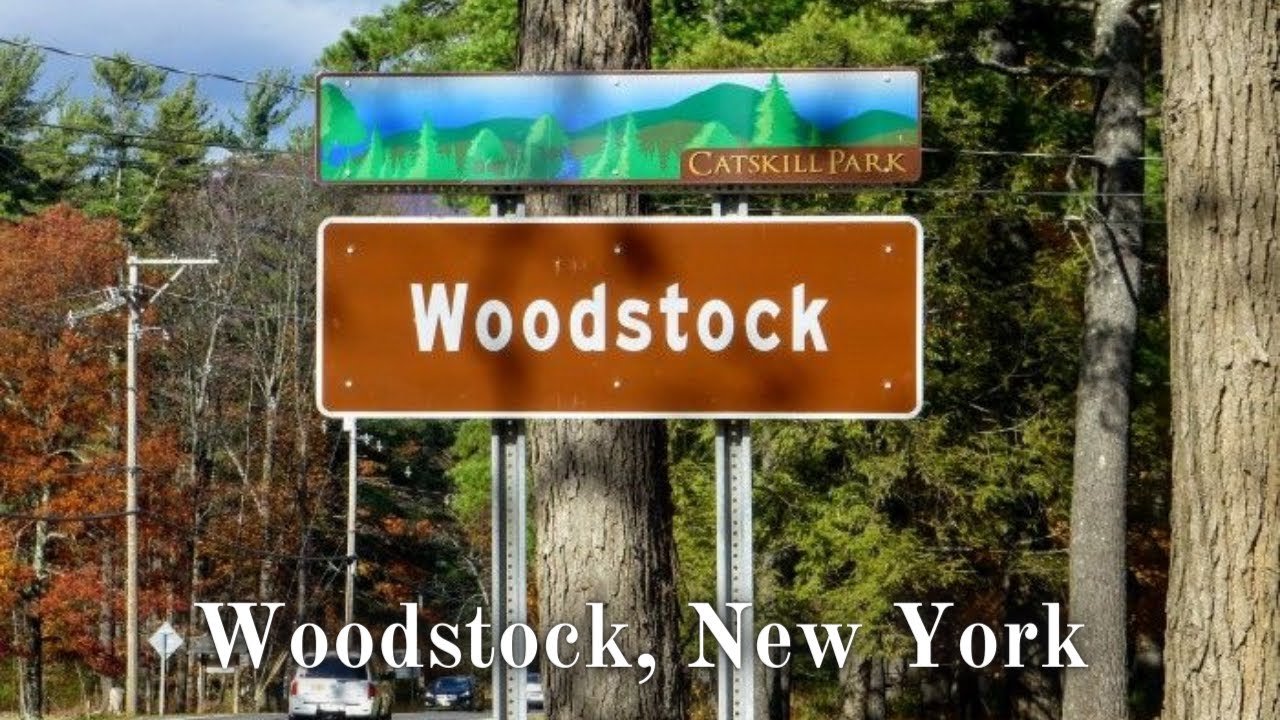THE REAL WOODSTOCK
WOODSTOCK, NY — Thirty miles down the road, on a slope so green and sweeping that it looked like God’s own amphitheater, the crowds poured in just over a half century ago.
But the human hordes of Woodstock are long gone now. In their memory, summer crowds pour into this Hudson Valley hamlet with the name that still sings.
At least ten times a day, someone walks into the Woodstock Music Store, downtown. “So,” they ask, “where was the festival held?” Patient clerks tell them they missed it — not just by 50 years but by 50 miles. (The festival site was Bethel Woods, NY.) Sometimes some wag will single out a nearby field and give directions. “And they go off and take photos of it,” a clerk told me, “and it’s actually, like, some Little League field.”
So it goes in “The Most Famous Small Town in the World.” But Woodstock always was more than a festival, and its festive atmosphere still draws people who, as locals say, “came for the festival and never left.”
Along downtown Tinker Street, the Woodstock generation seems to have grayed little, sagged less. Where else can you find a Levon Helm Memorial Boulevard? A huge candle growing wax stalactites since 1969? A free book bin that includes the Bhagavad Gita. And then there is all that tie die. And guitars. And bookstores with coffee table tomes about the festival, along with books on crystals, healing, and Woodstock’s most famous former resident.
Living with a legend isn’t easy, but Woodstock makes it seem so. Its grace under pressure, which includes weekend traffic jams and overflow parking lots, stems from its history. The town dates to the Revolutionary War but it spent the 19th century simply surviving the raw winters of upstate New York. Then in 1902, the artists came.
The first arts magnet was Byrdcliffe. Ralph Radcliffe Whitehead and his wife Jane Byrd, veterans of England’s Arts and Crafts movement, had a simple goal. To pursue a “rural, utopian ideal based on the brotherhood of artistic collaboration." Soon, artists weary of industrial America began moving to Woodstock, in the shadow of the Catskills.
The Art Students League of New York hosted annual summer retreats featuring plenty of wine, sex, and when things got slow, art. A series of classical concerts spread the word. Woodstock continued to attract artists into the 1960s when new arrivals brought guitars. One, who rented a room at Byrdcliffe, was named Dylan.
By the late Sixties, annual Woodstock Sound-Outs rocked nearby Saugerties. Sound-Outs featured Woodstock residents, including Dylan, Van Morrison, John Sebastian, Peter of Peter, Paul, and Mary, and The Hawks, soon known as The Band. Festival promoters took note.
“The Sound-Outs just had a great feel,” said Woodstock Festival producer Michael Lang. “And it was in the country and it provided all the guidelines that I needed." By July 1969, this little town was about to host its biggest concert yet. Tickets for the Woodstock Festival (you know the lineup or you wouldn’t still be reading) were printed. Posters were posted.
Then a month before showtime, the town pulled the permit. The move saved Woodstock from Coney Island crowds, but it was too late to change the festival’s name. A generation came to Yasgur’s Farm, and the rest was cosmic.
So even if Woodstock now has just 6,000 people, it also bears the burdens and blessings of history. Locals are still proud of how the town fed festival goers who wanted to continue the revelry, showing up here after the last notes of Jimi Hendrix, another former resident, faded. And before you could say “Altamont,” Woodstock was world famous.
Today “Woodstock festival” means a Woodstock Drum Boogie Festival, an annual poetry festival, a Shakespeare festival, a Dirt Farmer festival, and more. The Woodstock Film Festival draws Hollywood stars, some with summer homes nearby. Rare sightings include Uma Thurman, Brad Pitt, and Maggie Gyllenhaal. Don’t come looking for Dylan though. He split in ’72.
Woodstock traffics in its past but does not stop there. The name was always as much spirit as song, and spirit is not for sale. So the “Woodstock generation” shows itself in other ways. A downtown sculpture reads “May Peace Prevail on Earth” in 100+ languages. Artsy guitars hang along Tinker Street. Downtown also hosts a museum of local art, gallery after gallery, and New Age spinoffs spun from the 1960s. Crystals. Tarot readings. And so many mentions of Tibet that it seems to be Woodstock’s Sister City. Overlook Mountain hosts three Buddhist monasteries. Do I hear a “Nam-myoho-renge-kyo?”
Summer crowds will soon be gone. The festival’s anniversary will pass and Woodstock will settle down. Locals will breathe a sigh of relief. And except for its festivals, Woodstock will just be another Hudson Valley village. A few aging hippies, however, will keep the spirit alive. As the locals also say, “they came for the festival and don't know it ended.”















